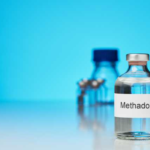A Guide to Substance Abuse and Addiction in Rural Areas
It’s a well-known statistic now that an estimated 130 Americans die every day from an opioid-related drug overdose.
Less spoken about is that this is largely disproportionate. Research has found that death rates from opioid overdoses were 45 percent higher in rural areas than in urban areas.
Addiction in rural areas is a hidden struggle. But one that desperately needs addressing so the many people suffering can get the resources they need to get better.
But how big is the problem?
How Common is Addiction in Rural Areas?
As we mentioned above, the mortality rate for opioid overdoses is significantly higher in rural areas than in urban areas. But the crisis is by no means limited to the opioid epidemic.
Studies have found adults living in rural areas have higher rates of alcohol abuse, tobacco abuse, and methamphetamine use. For young adults in rural areas, this picture is even bleaker as the rate of methamphetamine use for rural young adults is six times the rate of their urban counterparts.
It’s not an issue solely impacting those struggling with the abuse either. Drink driving offenses are higher in rural areas. The number of babies born with drug withdrawal symptoms has grown faster in rural areas than urban. The suicide rate in rural areas significantly higher than in urban areas.
These are stark and painful statistics to reckon with, but clear factors are contributing to addiction in rural areas.
Factors Contributing to Addiction in Rural Communities
The main factors contributing to higher addiction rates in rural communities are socio-economic. Rural residents have higher rates of poverty and are less likely to have health insurance, with limited access to healthcare. There are also higher rates of unemployment in rural areas and lower educational attainment.
This adds up to a huge group of people who are likely to be suffering mental health issues due to the socio-economic hand they’ve been dealt in life. Combined with a lack of health insurance to help get to the root of these problems, it’s no wonder addiction in rural areas is much higher than in urban areas.
Even bleaker is that even those with health insurance still may not have any treatment options available nearby. Without easy access to these facilities, addiction rates will remain high in rural areas.
Additionally, this may go some way in explaining why opioid overdoses mortality rates are higher in rural areas. Emergency services are often also located too far away to help as quickly as needed in these instances.
This sparsity also presents problems for law enforcement. Substance and alcohol abuse may go virtually unnoticed by law enforcement in sparse communities.
All these factors add up to a lethal breeding ground for both substance abuse and alcohol abuse to take place.
Substance Abuse in Rural Communities
While the statistics on opioid addiction in rural areas have already been stated, studies have additionally found rural adolescents and adults are more likely to abuse prescription painkillers. This could be in part because rural residents are more likely to work in physically demanding manual labor type jobs.
In local communities, methamphetamine abuse is now cited as the number one drug problem. This disproportionately affects rural young adults, aged between 18 to 25. This age group is six times more likely to abuse methamphetamines.
Methamphetamine abuse has very real consequences for the larger community. For example, Missouri averaged almost six meth lab incidents per day in 2011.
Those abusing methamphetamines suffer extreme lows when the euphoric effects dissipate, including paranoia, and can act violently due to this. This behavior has meant there have been sharp increases in crime like assault and theft in rural areas.
Alcohol Abuse in Rural Communities
Alcohol abuse in rural areas can be difficult to get a full picture of due to the vast nature of potential knock-on effects. Nonetheless, statistically speaking, alcohol abuse in rural areas is prevalent. This is particularly true for adolescents and young people.
In rural communities, two in five people between the age of 12 and 20 years old report underage drinking. They’re also more likely to drive drunk, with higher rates of DUIs. These adolescents are far more likely to struggle with alcohol use disorder in later life.
This drunk driving trend isn’t exclusive to rural teens either. Rural adults also have a higher rate of DUIs and are more likely to be in a drunk driving accident. In 2013, 4,915 people were killed in drunk driving accidents, with 48 percent of those accidents taking place in rural areas.
Some of this may be due to a lack of public transportation. The lack of these facilities makes rural residents far more likely to drive drunk. Drunk driving accidents and fatalities are a short-term picture of a long-term problem though.
The long-term picture results in many rural Americans dying earlier in life from common causes like heart disease, cancer, and strokes. All of these conditions can be linked to alcohol consumption. This isn’t to say they could be entirely prevented, but it’s likely many deaths could be prevented with the provision of alcohol use disorder treatment facilities.
Treating Addiction in Rural Areas
Many rural Americans may be seeking help with their addiction, but have inadequate or no access to treatment facilities. Often this leaves addicts with the option of traveling long distances, multiple times a week to seek treatment. Many people don’t have the means to do this.
Compounding this issue, even in areas where rural detox facilities may be available, there is a lack of addiction medication. More than 60 percent of rural counties have no physicians with a waiver to prescribe opioid addiction medication like suboxone or buprenorphine.
Finding a Detox Near You
It’s a bleak picture, but not a lost cause. There are some great rehab centers to help treat addiction in rural areas. Addiction Detox can help you, or your loved one, find the best available treatment center nearby to help you begin to heal.








